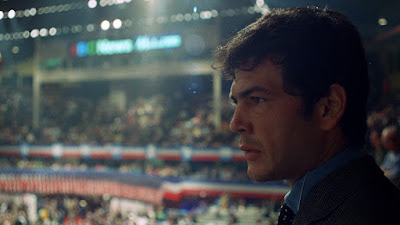In 1968, the United States was in turmoil. The country was mired in the Vietnam War. President Lyndon Johnson announced his resignation. Both Martin Luther King, Jr. and Robert F. Kennedy – two beacons of hope for civil rights and an end to the war – were assassinated. Angry and frustrated, people took to the streets in protest, most significantly at the Democratic National Convention in Chicago. Cinematographer Haskell Wexler was there filming his directorial debut, Medium Cool (1969), a prime example of cinema verité with its brilliant fusion of documentary and narrative filmmaking creating an immediacy and authenticity, with a loosely-scripted narrative set in and among the chaos of the Convention.
Wexler adopts the hand-held camera style of Jean-Luc Godard, accompanying a raw, improvisational approach to acting reminiscent of John Cassavetes. This creates an air of authenticity, encouraging us to wonder what is real and what is staged. It feels real and immediate – be it a violent roller derby match that John and Gus attend, or the scene where two little kids free a pigeon on a subway platform and play on the train ride home, in what feels like an unguarded moment. Other times, he keeps the camera mostly stationary with very little movement, simply observing his subjects, such as the scene where we watch the daily activities of Eileen (Verna Bloom), a mother, and her son Harold (Harold Blankenship).






